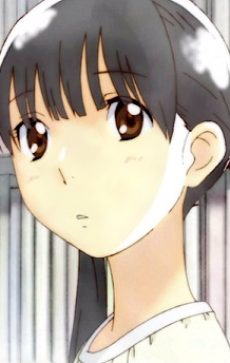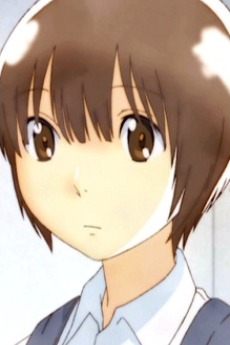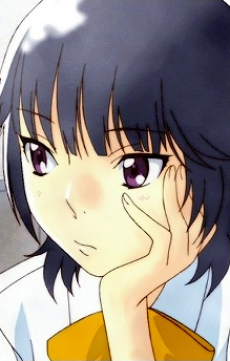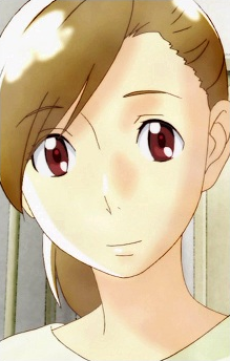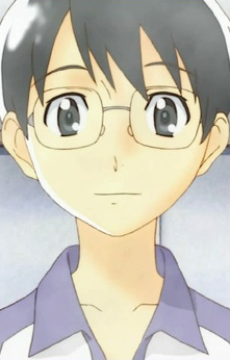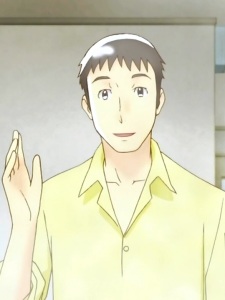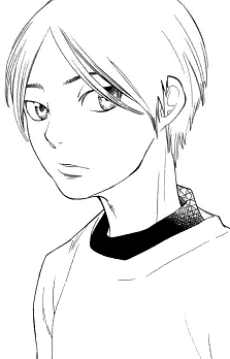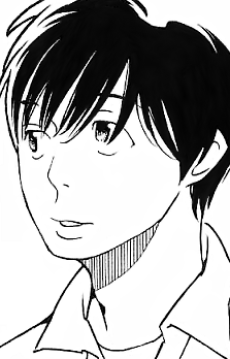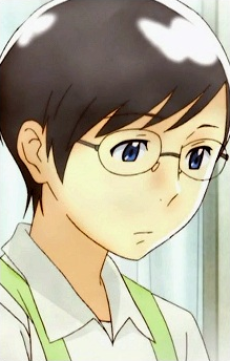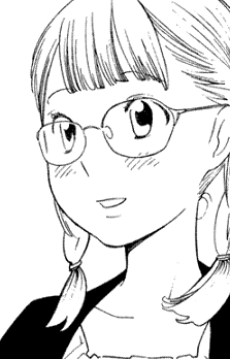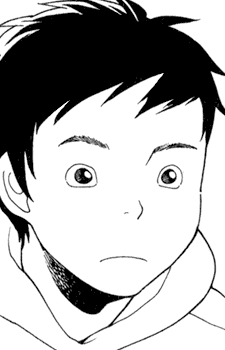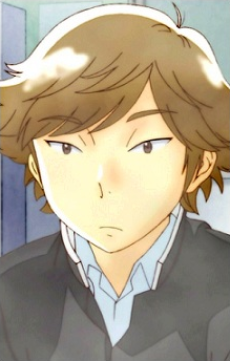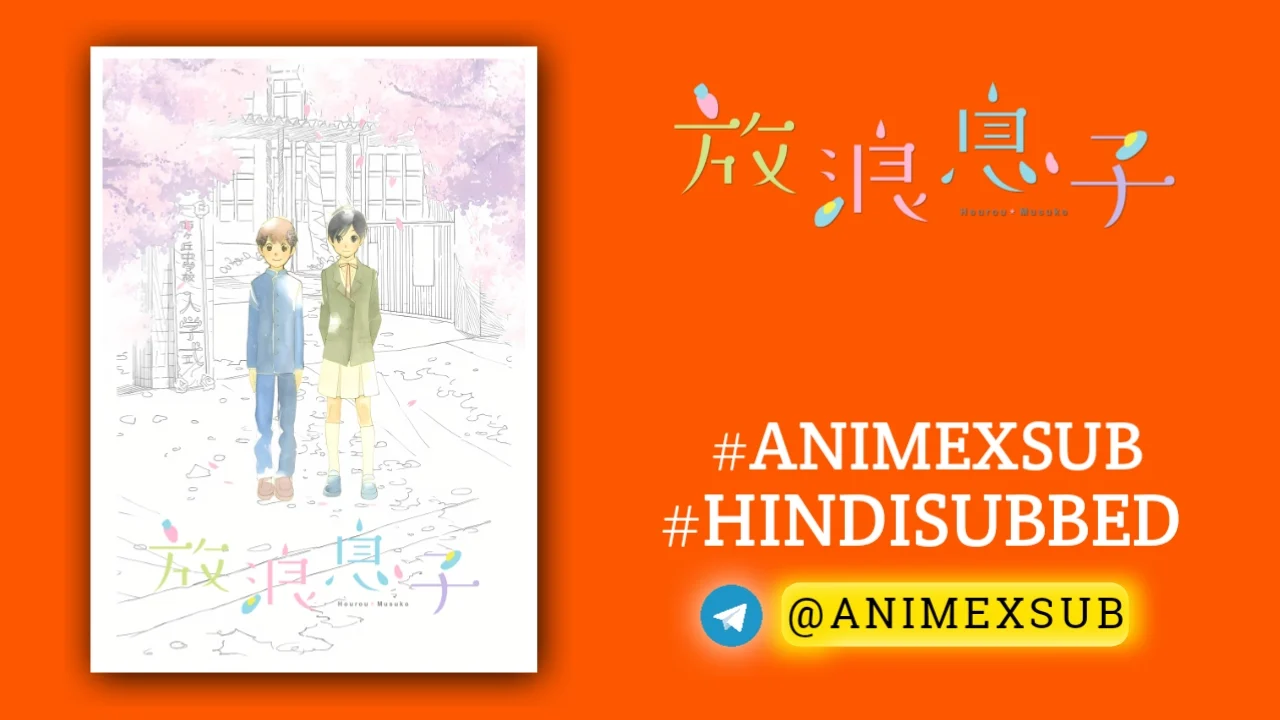
Wandering Son Hindi Subbed [12/12] | Hourou Musuko Hindi Sub!!

Hourou Musuko
Wandering SonSynopsis
Fifth grader Shuuichi Nitori is considered by most to be one of the prettiest girls in school, but much to her dismay, she is actually biologically male. Fortunately, Shuuichi has a childhood friend who shares similar feelings of gender dysphoria: the lanky tomboy Yoshino Takatsuki, who, though biologically female, does not identify as a girl. These two friends share a similar secret and find solace in one another; however, their lives become even more complicated when they must tread the unfamiliar waters of a new school, attempt to make new friends, and struggle to maintain old ones. Faced with nearly insurmountable odds, they must learn to deal with the harsh realities of growing up, gender identity, relationships, and acceptance. Lauded as a decidedly serious take on gender identity and LGBT struggles, Takako Shimura's Hourou Musuko is about Shuuichi and Yoshino's journey to discover their true selves as they enter puberty, make friends, fall in love, and face real and difficult choices. Note: The full version of Hourou Musuko was originally intended to be 12 episodes, but the programming block it aired on only had space for 11 episodes. Therefore, episodes 10 and 11 were edited together and aired on TV as episode 10. Episode 12 was aired on TV as episode 11. The full versions of episodes 10 and 11 were included on the BD & DVD releases and are included in the Hourou Musuko Specials entry.
Watch Trailer
Characters
Wandering Son Season 1: A Gentle, Groundbreaking Exploration of Identity and Adolescence
Wandering Son (Hōrō Musuko), a 12-episode anime adapted from Takako Shimura’s manga and directed by Ei Aoki, is a rare gem in the world of animation. Premiering in 2011, this series transcends typical coming-of-age narratives by centering on two transgender preteens navigating the complexities of gender identity, friendship, and puberty. With its delicate storytelling, evocative visuals, and unflinching emotional honesty, Wandering Son Season 1 offers a next-level exploration of identity that feels both universal and profoundly specific. This review dives deep into why this series is a landmark achievement, redefining how anime can tackle sensitive topics with grace and authenticity.
A Story That Breaks New Ground
At its core, Wandering Son follows Shuichi Nitori, a shy fifth-grader assigned male at birth who dreams of living as a girl, and Yoshino Takatsuki, a tall, tomboyish classmate assigned female at birth who yearns to be recognized as a boy. As they transfer to a new school, their budding friendship becomes a safe space to explore their gender identities, confront societal expectations, and grapple with the onset of puberty—a process that feels like a betrayal of their true selves. The series weaves their personal journeys with the lives of their friends, family, and classmates, creating a tapestry of relationships that are as heartwarming as they are heartbreaking.
What sets Wandering Son apart is its refusal to sensationalize or trivialize its subject matter. Unlike many anime that use gender-bending as a comedic trope, this series treats transgender experiences with nuance and respect. It’s not about shock value or exaggerated drama; it’s about the quiet, everyday moments of doubt, discovery, and resilience. The show’s slow, deliberate pace—praised by critics like Rebecca Silverman of Anime News Network—mirrors the real-life rhythm of self-discovery, giving viewers time to connect with the characters’ inner worlds.
The narrative doesn’t shy away from the challenges of being transgender in a society bound by rigid gender norms. Shuichi’s longing to wear a girl’s uniform and Yoshino’s discomfort with developing breasts are portrayed with raw emotional clarity, capturing the dysphoria and alienation that accompany puberty for many trans youth. Yet, the series also highlights moments of joy and acceptance, such as when Shuichi’s sister Maho supports his cross-dressing or when Yoshino finds solace in a short haircut that aligns with his masculine identity. These moments are small but seismic, showing that hope can coexist with struggle.
Visual and Aesthetic Mastery
Visually, Wandering Son is a masterclass in subtlety. The animation, produced by AIC Classic, uses a soft pastel palette and watercolor-like backgrounds to create a “gentle” aesthetic, as described by Wrong Every Time. This visual warmth softens the story’s heavier themes, making the world feel inviting even when the characters face rejection or confusion. The character designs are deliberately androgynous, reflecting the fluidity of gender and allowing viewers to see Shuichi and Yoshino as they see themselves, unbound by binary constraints.
The series also employs cinematic techniques to elevate emotional beats. For instance, scenes of Shuichi’s inner turmoil often feature faded backgrounds, drawing attention to his expressions and body language. These choices, noted by Andrea Lipinski in School Library Journal, transform ordinary moments into poignant reflections of the characters’ inner lives. The music, while occasionally understated, complements the visuals with soothing piano melodies that underscore the show’s introspective tone.
Characters That Resonate
The strength of Wandering Son lies in its deeply human characters. Shuichi is a compelling protagonist—not because he’s flashy or heroic, but because he’s vulnerable and real. His sensitivity, occasional emotional outbursts, and passion for baking and writing make him relatable, even to viewers unfamiliar with transgender experiences. Yoshino, his mirror image, is equally compelling, with his quiet determination to present as masculine despite societal and familial pressures. Their friendship is the heart of the series, a lifeline that allows them to support each other through moments of doubt and courage, like when Yoshino comforts Shuichi under a starry sky, saying, “I saw a girl wearing a hoodie with a skirt.”
Supporting characters add depth to the story. Saori, a complex and sometimes abrasive classmate, encourages Shuichi’s cross-dressing but struggles with her own isolation and jealousy. Maho, Shuichi’s older sister, balances typical sibling teasing with moments of surprising empathy. These relationships evolve organically, reflecting the messy, multifaceted nature of adolescence. Critics have noted that the characters sometimes act older than their age, a point raised by Rebecca Silverman, but this maturity underscores the weight of their experiences, making their emotional realism all the more striking.
A Cultural and Social Milestone
Wandering Son is a cultural touchstone, not just for its representation of transgender youth but for its broader commentary on identity and acceptance. The series, set in Japan, portrays a society where transgender issues are less stigmatized than in some Western contexts, yet still fraught with misunderstanding. This contrast, highlighted in an IMDb review, invites viewers to reflect on how cultural norms shape personal experiences. The show’s ability to address these themes without preaching or oversimplifying is a testament to Takako Shimura’s storytelling and Mari Okada’s series composition, which prioritizes interiority over melodrama.
The anime’s impact extends beyond its narrative. It was awarded an honorable mention for technical achievement at the 65th Motion Picture and Television Engineering Society of Japan Awards in 2012, and the manga was nominated for the Young Adult Library Services Association’s 2012 Great Graphic Novels for Teens list. These accolades reflect its critical acclaim and influence within and beyond the anime community.
Why It’s Next-Level
What makes Wandering Son Season 1 a next-level achievement is its courage to tell a story that was, at the time, largely absent from mainstream anime. In 2011, transgender representation in media was rare, especially in a medium often dominated by escapist fantasies. By centering on two young trans characters, the series challenges viewers to empathize with experiences that may feel foreign while highlighting the universal struggles of growing up. Its gentle pacing, emotional depth, and visual beauty create an immersive experience that lingers long after the credits roll.
The series also invites viewers to question societal norms around gender and identity. It doesn’t provide easy answers or neat resolutions, mirroring the ongoing nature of self-discovery. This authenticity, combined with its accessibility—described as “100% acceptable for a 5-year-old to watch” in terms of its non-offensive approach—makes it a powerful tool for education and empathy.
A Call to Watch and Reflect
Wandering Son Season 1 is not just an anime; it’s a transformative experience that redefines what animation can achieve. It’s a story about finding yourself in a world that doesn’t always understand you, told with a tenderness that’s both heartbreaking and uplifting. For fans of introspective dramas like A Silent Voice or March Comes in Like a Lion, this series is a must-watch. For those new to anime, it’s an accessible entry point that transcends genre conventions.
While the series is no longer available on major streaming platforms like Crunchyroll due to licensing issues, as noted in a Reddit discussion, it can still be found on sites like 9anime.to (though dubbed versions are unavailable). For those who can access it, Wandering Son is a journey worth taking—a quiet revolution that reminds us of the power of friendship, the courage to be oneself, and the beauty of stories that dare to be different.
Rating: 9/10
A groundbreaking, heartfelt masterpiece that balances sensitivity with unflinching honesty, Wandering Son Season 1 is a testament to the power of anime to illuminate the human experience.
Support Our Anime Community!
Love watching the latest anime? Help us keep uploading new episodes by join telegram channel ❤️
Join Now!